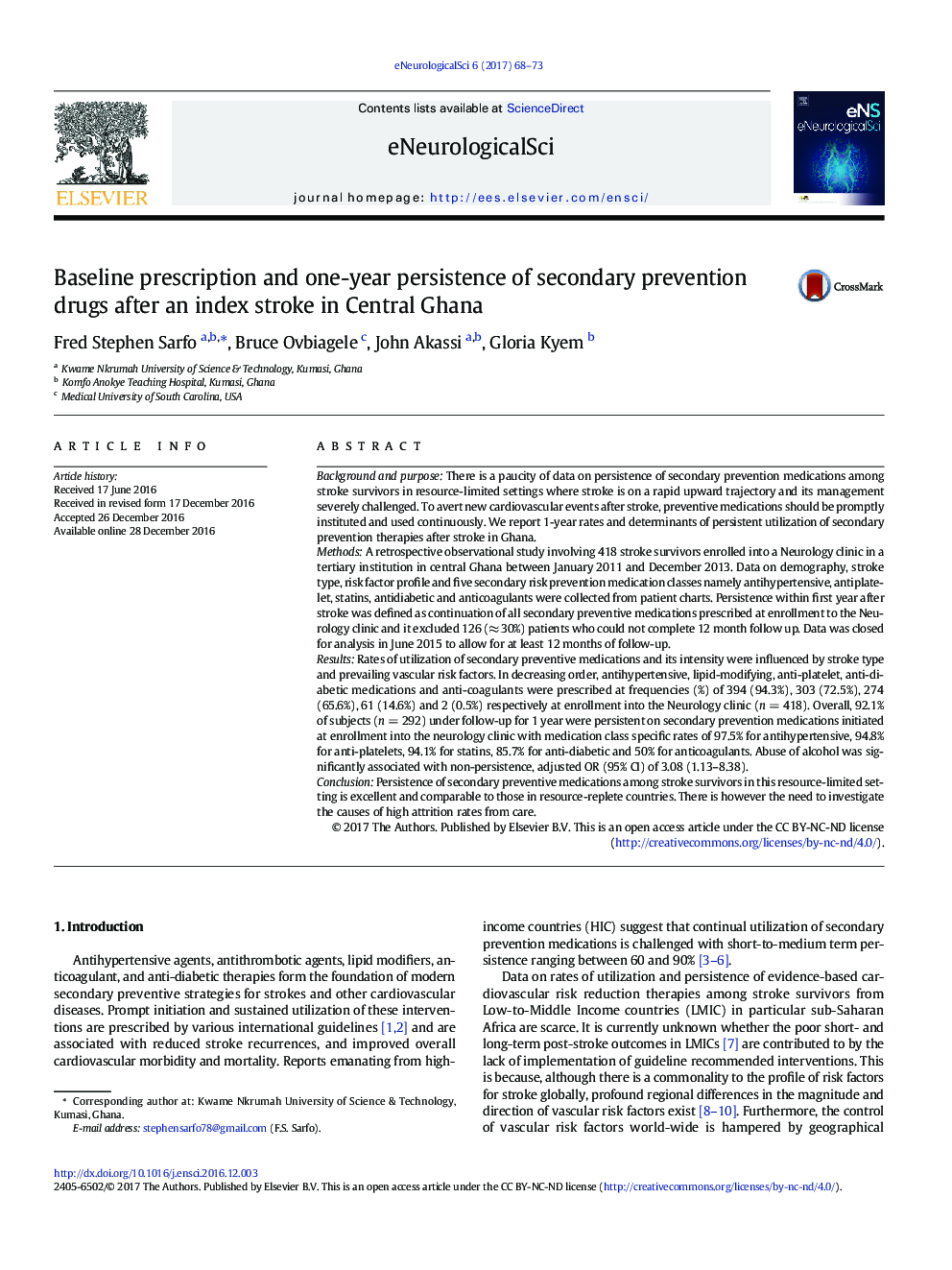| Article ID | Journal | Published Year | Pages | File Type |
|---|---|---|---|---|
| 6009697 | eNeurologicalSci | 2017 | 6 Pages |
â¢Prompt initiation of CVD preventive drugs is recommended after stroke.â¢Hypertension, dyslipidemia, diabetes commonest modifiable CVD risk factors identified among Ghanaian stroke survivors.â¢Antihypertensive, lipid-modifying, anti-platelet agents prescribed at 94%, 73% and 66% respectively.â¢30% Loss to follow-up among stroke survivors at month 12.â¢92% of stroke survivors persisted on CVD preventive drugs at month 12.
Background and purposeThere is a paucity of data on persistence of secondary prevention medications among stroke survivors in resource-limited settings where stroke is on a rapid upward trajectory and its management severely challenged. To avert new cardiovascular events after stroke, preventive medications should be promptly instituted and used continuously. We report 1-year rates and determinants of persistent utilization of secondary prevention therapies after stroke in Ghana.MethodsA retrospective observational study involving 418 stroke survivors enrolled into a Neurology clinic in a tertiary institution in central Ghana between January 2011 and December 2013. Data on demography, stroke type, risk factor profile and five secondary risk prevention medication classes namely antihypertensive, antiplatelet, statins, antidiabetic and anticoagulants were collected from patient charts. Persistence within first year after stroke was defined as continuation of all secondary preventive medications prescribed at enrollment to the Neurology clinic and it excluded 126 (â 30%) patients who could not complete 12 month follow up. Data was closed for analysis in June 2015 to allow for at least 12 months of follow-up.ResultsRates of utilization of secondary preventive medications and its intensity were influenced by stroke type and prevailing vascular risk factors. In decreasing order, antihypertensive, lipid-modifying, anti-platelet, anti-diabetic medications and anti-coagulants were prescribed at frequencies (%) of 394 (94.3%), 303 (72.5%), 274 (65.6%), 61 (14.6%) and 2 (0.5%) respectively at enrollment into the Neurology clinic (n = 418). Overall, 92.1% of subjects (n = 292) under follow-up for 1 year were persistent on secondary prevention medications initiated at enrollment into the neurology clinic with medication class specific rates of 97.5% for antihypertensive, 94.8% for anti-platelets, 94.1% for statins, 85.7% for anti-diabetic and 50% for anticoagulants. Abuse of alcohol was significantly associated with non-persistence, adjusted OR (95% CI) of 3.08 (1.13-8.38).ConclusionPersistence of secondary preventive medications among stroke survivors in this resource-limited setting is excellent and comparable to those in resource-replete countries. There is however the need to investigate the causes of high attrition rates from care.
